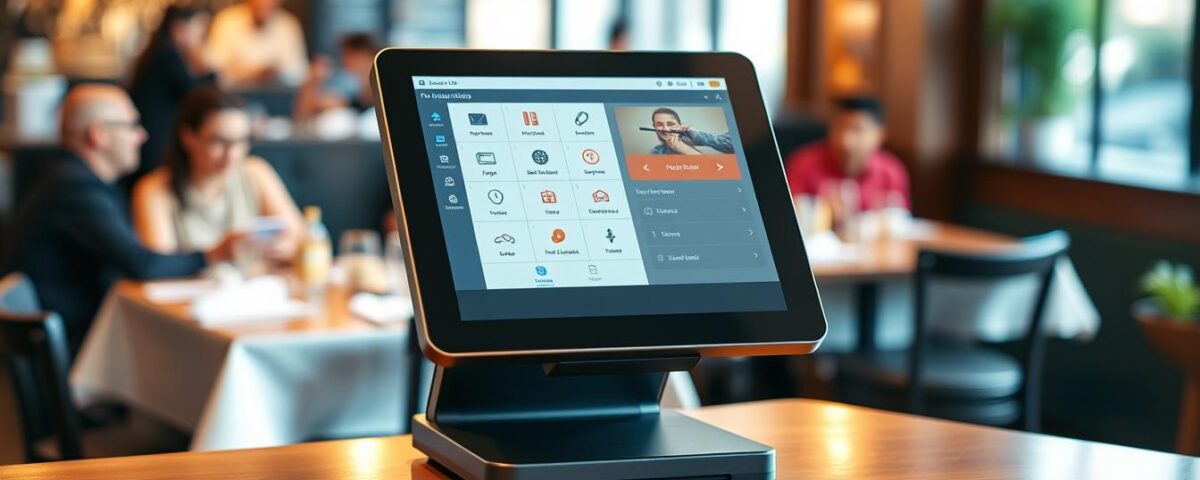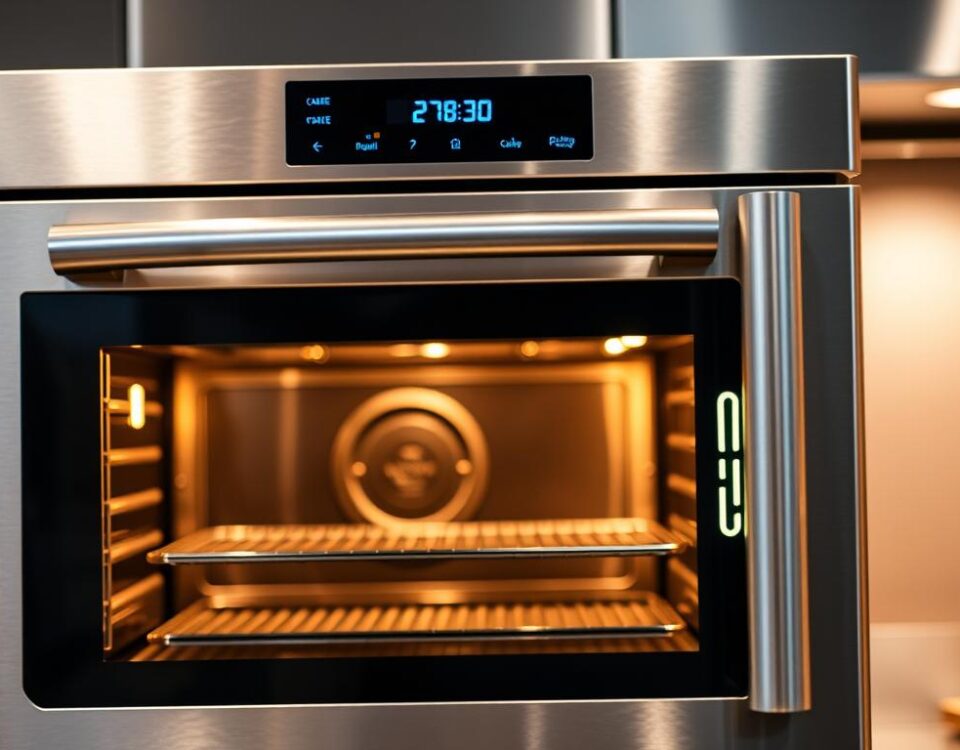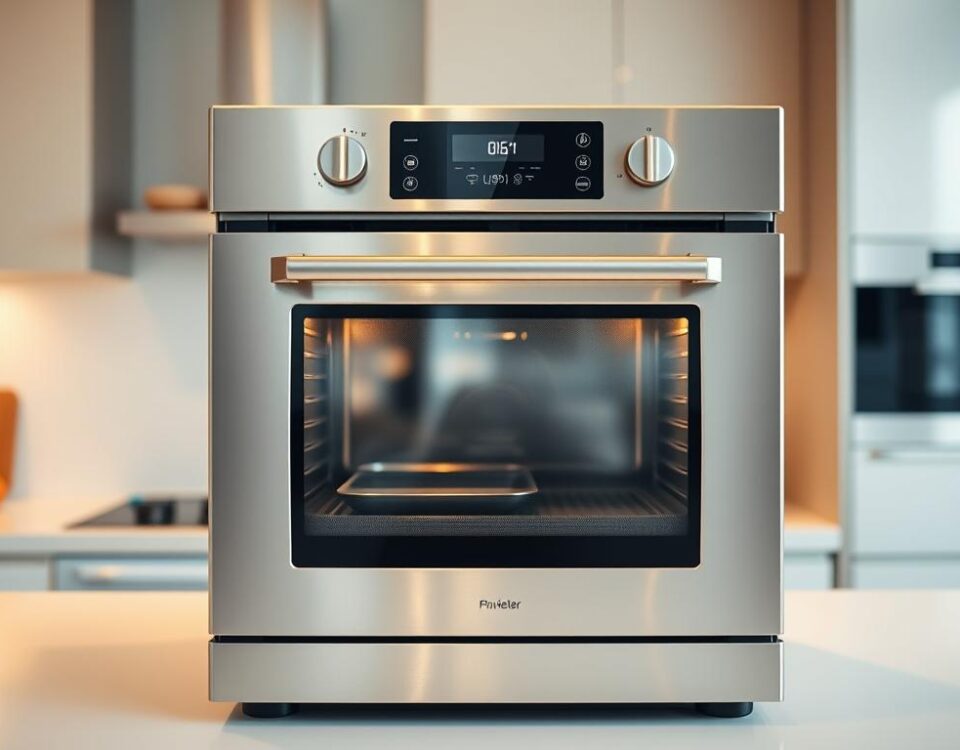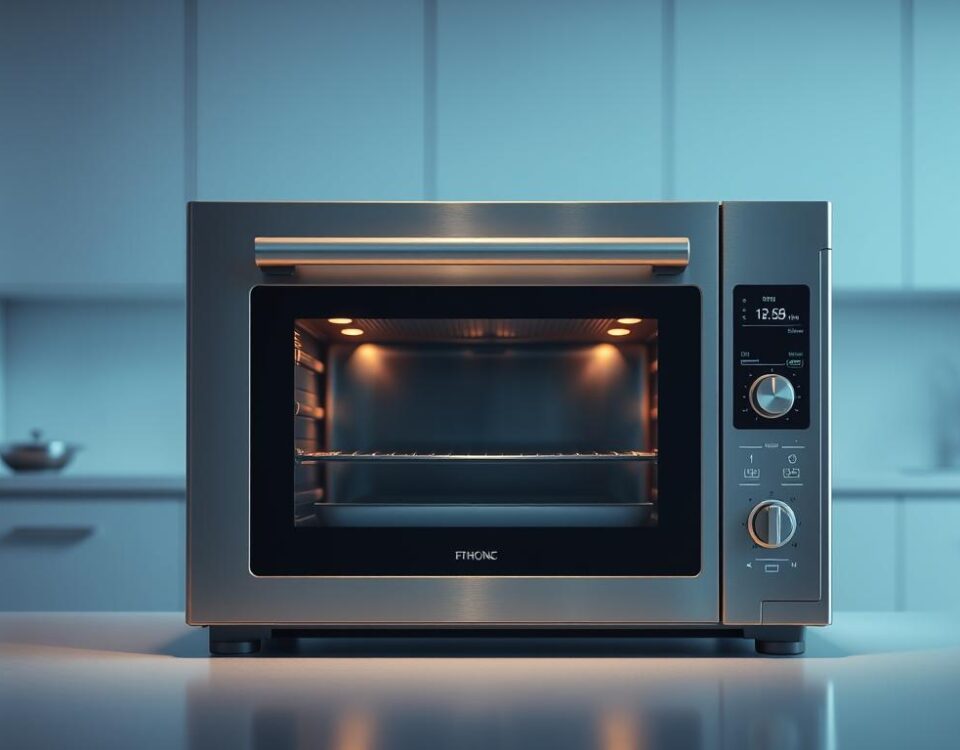
Case Study: How We Boosted Restaurant Sales 30% with Online Marketing
August 9, 2025
Restaurant Tech Stack 2025: 10 Tools for Streamlined Operations
August 10, 2025As a restaurant owner, managing daily operations can be overwhelming. I recall a small café owner struggling to keep up with orders and payments, resulting in lost revenue and frustrated customers. Did you know that inefficient POS systems cost the food industry millions annually?
With numerous options available, selecting the right POS system is vital for streamlining operations, improving customer service, and boosting your bottom line. The right payment processing and hardware can make all the difference. In this article, we’ll compare three leading POS systems – Toast, Square, and Clover – to help you make an informed decision.
So, which POS system is right for your restaurant business? Let’s dive in and explore the strengths and weaknesses of each system to find out.
Key Takeaways
- Understand the key features and benefits of Toast, Square, and Clover POS systems.
- Learn how to choose the best POS system for your restaurant’s specific needs.
- Discover how the right POS system can improve customer service and boost sales.
- Find out how to streamline your restaurant operations with the right POS hardware and software.
- Make an informed decision based on your business size, budget, and operational requirements.
The Evolution of Restaurant POS Systems
Restaurant POS systems have evolved dramatically, from simple cash registers to complex business management solutions. The industry has moved from traditional cash registers to sophisticated POS systems that can handle everything from inventory management to customer loyalty programs.
The transformation of POS systems has been significant. Modern POS systems have transformed from simple payment processors to comprehensive business management platforms that handle inventory, customer relationships, and analytics. This shift has enabled restaurants to streamline their operations and improve customer experience.
One of the key developments in POS systems is the shift toward mobile POS solutions that allow for tableside ordering and payment, improving both operational efficiency and customer experience in restaurants. Additionally, cloud-based POS systems have revolutionized the industry by offering real-time data access, automatic updates, and reduced hardware requirements.
The integration capabilities of modern POS systems with third-party services have become essential features, allowing businesses to create customized solutions. The pandemic has also accelerated POS innovation, particularly in areas like contactless payments, online ordering, and delivery integration.
As POS systems continue to evolve, they are incorporating shared commerce features, customer relationship management (CRM) functionality, and data intelligence. This evolution is transforming the way restaurants operate and interact with their customers.
Toast POS: Overview and Key Features
For restaurant owners looking for a comprehensive POS solution, Toast POS stands out with its robust features and flexible pricing plans. Toast POS is designed to cater to the diverse needs of restaurants, offering a range of tools to enhance operational efficiency.
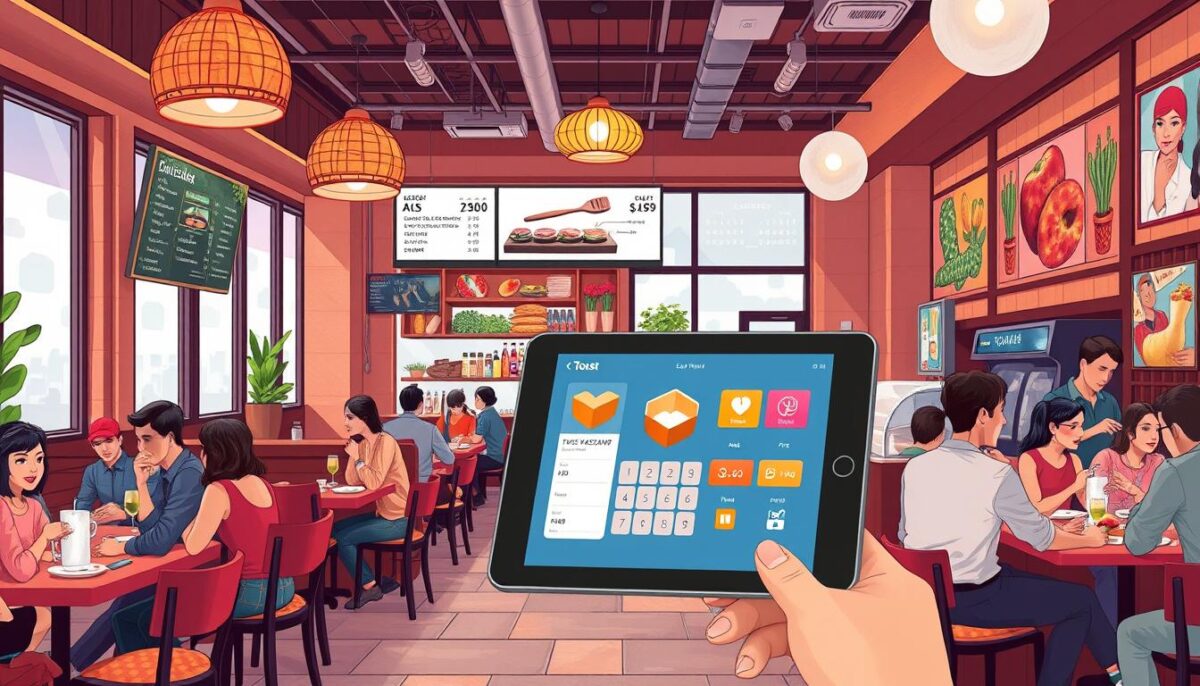
Toast POS Hardware Options
Toast POS offers a variety of hardware options to suit different restaurant configurations. The Toast Flex and Toast Hub are designed to be versatile and adaptable to various business needs. Restaurants can choose from a range of hardware configurations, including handheld devices and kitchen displays, to create a customized POS setup.
The hardware costs can be managed through different plans, including purchasing outright or opting for hardware-as-a-service models, providing flexibility in budgeting.
Toast POS Pricing Structure
Toast POS operates on a tiered pricing structure, starting with a free Quick Start Bundle. The Core plan is priced at $69 per month, while the Growth plan costs $165 per month. Toast also offers a custom plan tailored to the specific needs of each restaurant.
The pricing plan includes various features, and restaurants can select the plan that best fits their operational requirements. Additionally, Toast assigns a custom credit card processing fee based on the restaurant’s size, type, and hardware needs.
Card-not-present transactions incur a higher fee, starting at 2.49% + $0.15 for in-person transactions. Understanding these fees is crucial for managing overall POS costs.
Square POS: Overview and Key Features
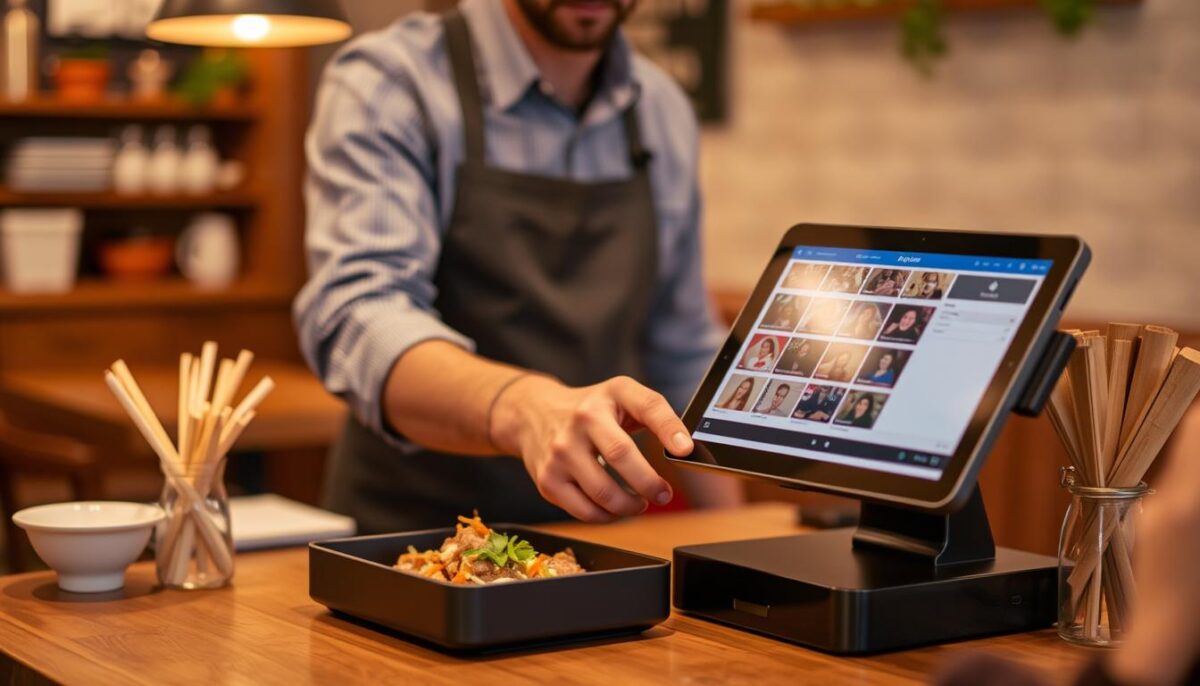
In the competitive world of restaurant management, Square POS provides a cutting-edge solution that caters to various business needs. Square POS is designed to be intuitive and user-friendly, making it an excellent choice for restaurants of all sizes.
One of the standout features of Square POS is its ability to integrate seamlessly with various hardware options, providing flexibility and scalability for growing businesses. With Square POS, restaurants can enjoy a streamlined operation that enhances customer experience and improves efficiency.
Hardware Options
Square POS offers a range of hardware options to suit different restaurant needs. From the compact Square Reader for contactless payments to the more comprehensive Square Terminal, there’s a device that’s perfect for every business model. Restaurants can choose to purchase hardware outright, avoiding long-term leases and contracts.
The hardware options include:
- Square Reader for contactless payments
- Square Terminal for a comprehensive POS experience
- Square Stand for a secure and stable tablet mount
Pricing Structure
Understanding the pricing plan of Square POS is crucial for restaurants considering this POS system. Square POS offers a transparent pricing structure that starts with a free plan, including basic POS functionality with no monthly subscription fees. The only payment is a percentage of each transaction, making it a flexible option for businesses with varying sales volumes.
For restaurants requiring more advanced features, Square offers paid plans, including Square for Restaurants Plus at $60 per month. This plan includes 24/7 support, improved reporting, and inventory features. Square’s in-person transaction fees start at 2.6% + 10¢ per transaction, which is competitive with industry standards.
Additional costs may apply for premium features such as advanced team management and loyalty programs. However, the flexibility of Square POS allows restaurants to operate on a month-to-month basis, with the freedom to change or cancel plans as needed.
Clover POS: Overview and Key Features
Restaurants looking for a POS system that combines hardware and software seamlessly may find Clover POS to be an ideal choice. Clover POS offers a comprehensive suite of tools designed to streamline restaurant operations, from order management to payment processing.
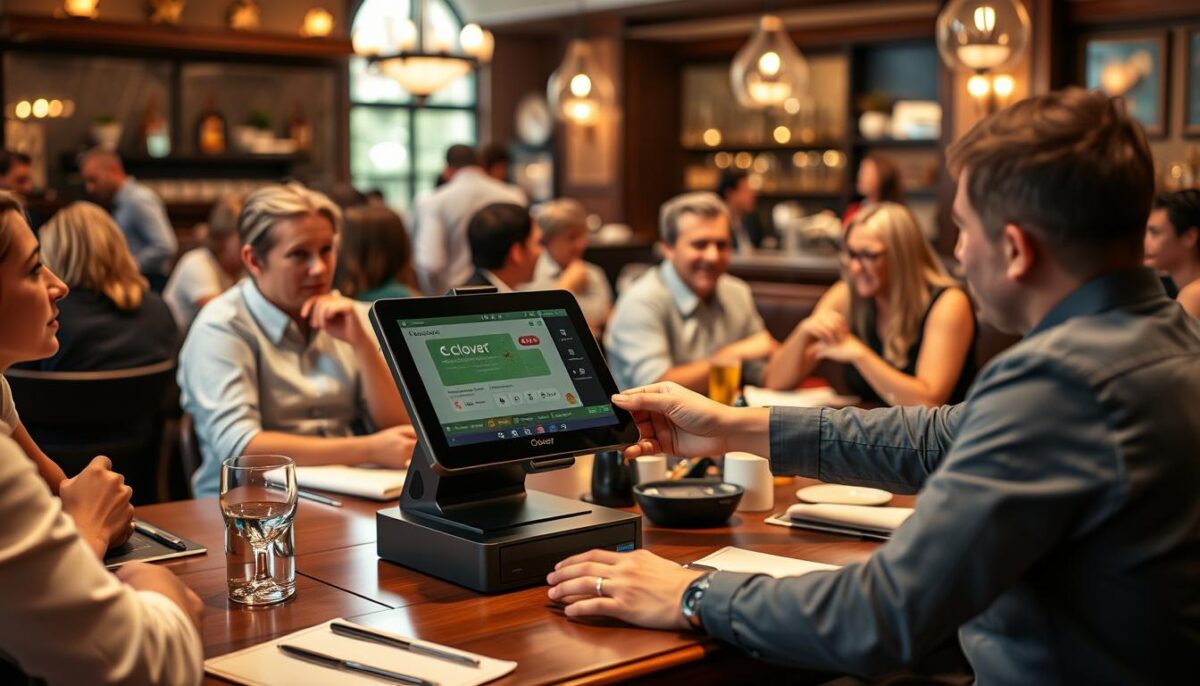
Clover’s system is highly customizable, allowing restaurants to tailor the interface and features to their specific needs. This flexibility is particularly beneficial for establishments with unique operational requirements.
Hardware Options
Clover POS provides a range of hardware options to suit different restaurant sizes and types. Their hardware packages start at around $60 per month and can include devices such as terminals, printers, and card readers. The flexibility in hardware choices allows restaurants to scale their POS system as they grow.
Pricing Structure
Clover’s pricing structure is tiered, with plans starting at $14.95 per month for basic services. However, for a fully functional POS system, restaurants can expect to pay around $60 per month, which includes software and hardware. Clover’s payment processing fees range from 2.3% + $0.10 to 3.5% + $0.10 per transaction, which are competitive, especially for high-volume businesses.
The pricing plan is designed to accommodate different business needs, with options for additional features and third-party integrations. Restaurants should consider their transaction volume and operational requirements when selecting a plan to ensure they choose the most cost-effective option.
Toast vs. Square vs. Clover POS: Direct Comparison
With multiple POS systems available, understanding the differences between Toast, Square, and Clover is essential for restaurant owners looking to optimize their operations. Each system has its strengths and weaknesses, and a direct comparison can help you determine which one is the best fit for your business.
Let’s start with pricing, a critical factor for any business. Square is the most affordable POS out of these three options, with a starter plan at zero dollars per month and lower transaction rates compared to Toast. However, Toast offers a wider selection of free hardware options, making it a better value for food and drinks venues seeking something more elevated than an iPad setup. On the other hand, Clover‘s entry price is $60 per month for retailers and $90 per month for food businesses, but its transaction fees range from 2.3% + 10¢ to 3.5% + 10¢, which are lower than those charged by Toast and Square, potentially making it more cost-effective for high-volume businesses.
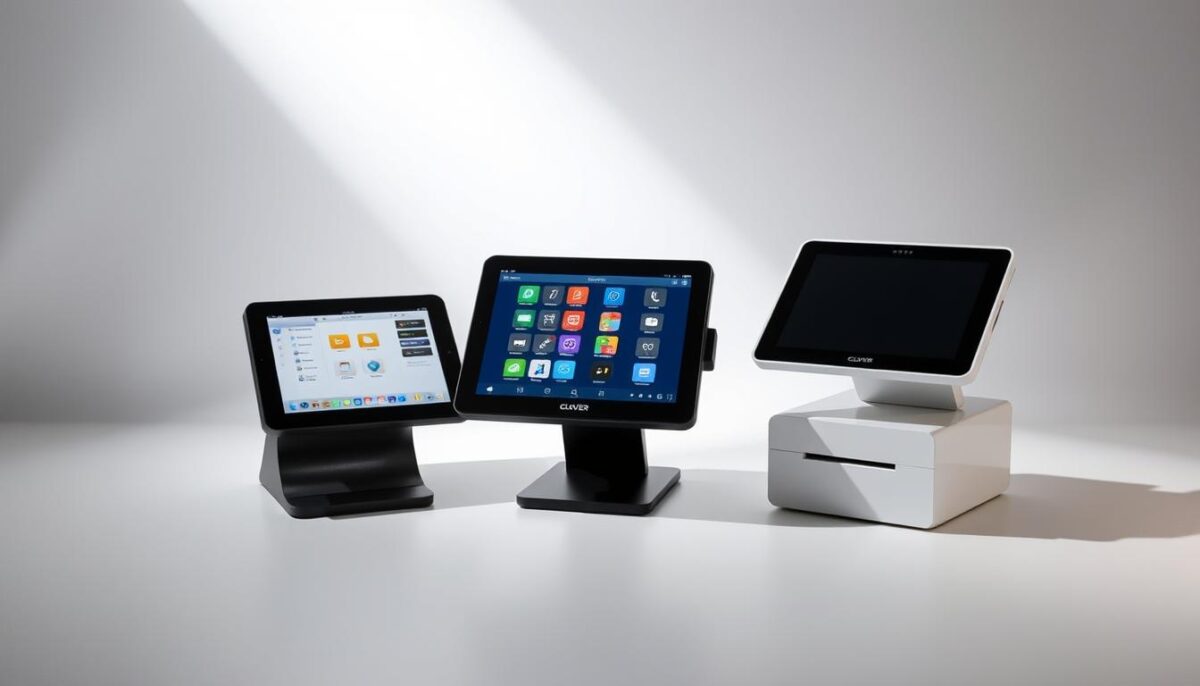
To further compare these POS systems, let’s examine their features, hardware options, and ease of use. The table below summarizes the key differences:
| POS System | Pricing | Hardware Options | Ease of Use |
|---|---|---|---|
| Toast | Custom pricing | Wide selection of free hardware | Moderate learning curve |
| Square | $0/month (starter plan) | Limited hardware options | User-friendly interface |
| Clover | $60-$90/month | Variety of hardware options | Intuitive interface |
When it comes to restaurant-specific needs like table management, split checks, and tip adjustments, each system has its unique features. For instance, Clover is generally considered the most intuitive, followed by Square and then Toast. The choice ultimately depends on your restaurant’s specific needs and size.
In conclusion, the best POS system for your restaurant depends on various factors, including your business size, transaction volume, and specific needs. By comparing the features, pricing, and hardware options of Toast, Square, and Clover, you can make an informed decision that optimizes your restaurant’s operations.
Payment Processing and Transaction Fees
Understanding payment processing fees is crucial for restaurant owners to manage their bottom line effectively. When it comes to POS systems, the fees associated with processing transactions can vary significantly. In this section, we’ll delve into the payment processing fees of Toast, Square, and Clover, comparing their structures and how they impact restaurants of different sizes.
The table below summarizes the in-person transaction fees for each POS system:
| POS System | In-Person Transaction Fees |
|---|---|
| Toast | 2.49% + $0.15 per transaction |
| Square | 2.6% + 10¢ per transaction |
| Clover | 2.3% + 10¢ to 3.5% + 10¢ per transaction |
As shown, Clover’s fees range from 2.3% + 10¢ to 3.5% + 10¢, potentially offering lower rates for high-volume businesses. All three systems charge higher rates for card-not-present or manually entered transactions, which is a critical consideration for restaurants that handle online orders or phone payments.
Additional considerations include chargeback policies, fund availability timeframes, and payment dispute resolution processes. For instance, understanding how each system handles chargebacks can save a restaurant from potential losses. Moreover, the security features and PCI compliance measures implemented by each POS provider play a vital role in protecting customer data.
When choosing a POS system, it’s essential to consider not just the transaction fees but also how each system handles alternative payment methods like digital wallets and contactless payments. Integrated payment processing can streamline operations and potentially reduce fees, whereas third-party processing might offer more flexibility but could increase costs.
Restaurant-Specific Features Comparison
Choosing the right POS system for your restaurant involves comparing features that cater directly to restaurant operations. A key aspect of this comparison lies in understanding how different POS systems handle restaurant-specific tasks.
Menu Management and Customization
Effective menu management is crucial for any restaurant. Toast, Square, and Clover POS systems offer various degrees of menu customization. Toast is known for its flexibility in menu engineering, allowing for detailed menu item customization. Square also offers robust menu management features, including the ability to create modifier groups and track inventory. Clover’s menu management is user-friendly, with options for customizing menu items and managing inventory levels.
Table Management and Floor Planning
For full-service restaurants, table management is a vital feature. Square POS excels in this area, offering a comprehensive table management system that includes floor planning and the ability to manage multiple tables and sections. Toast also provides a solid table management feature, allowing servers to manage their sections efficiently. Clover’s table management capabilities are somewhat limited compared to Toast and Square, but it still offers basic functionality.
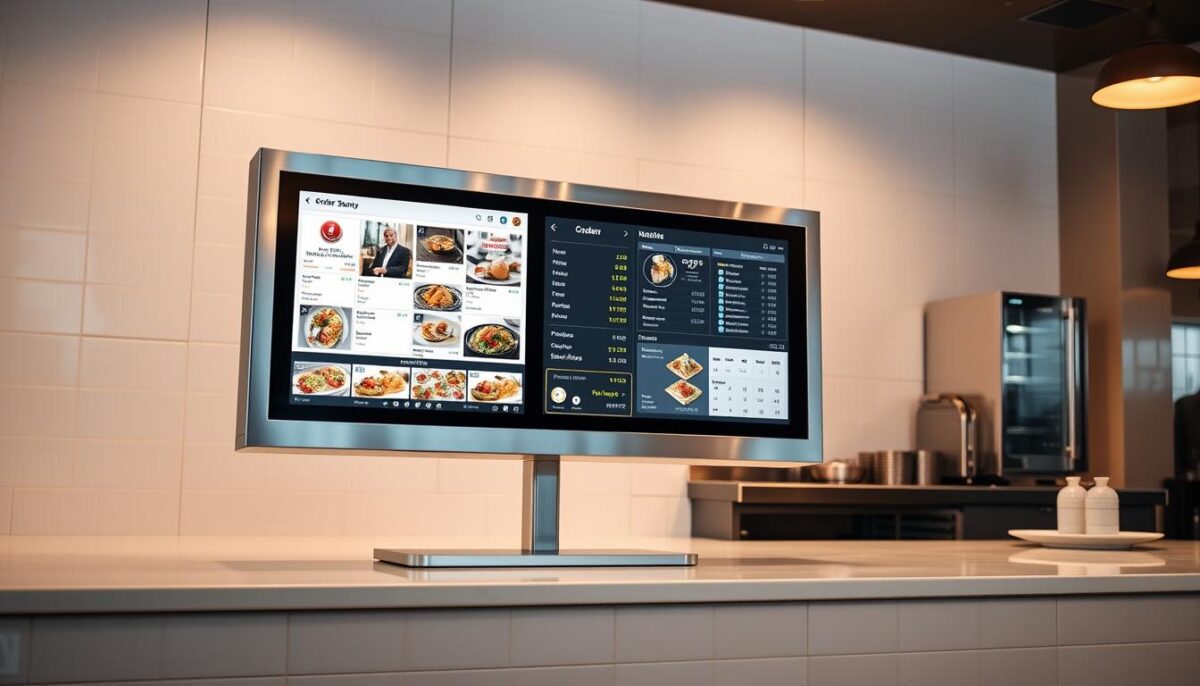
Kitchen Display Systems and Order Routing
The kitchen display system (KDS) is a critical component of a restaurant’s POS system, as it streamlines communication between the front and back of house. Toast and Square both have streamlined order-to-kitchen workflow setups that receive in-person, online, and third-party delivery platform orders on one centralized display or routed to specific screens. Toast’s KDS was praised for improving communication lines between the front and back of house. Here are some key aspects of their KDS:
- Efficient Order Routing: Both Toast and Square efficiently route orders to different prep stations, ensuring that food items are sent to the appropriate kitchen areas.
- Order Timing and Coursing: These systems help kitchen staff coordinate meal preparation by managing order timing and coursing.
- Handling Special Instructions: They can handle special instructions, modifications, and dietary restrictions to ensure accurate order fulfillment.
- Integration with Online Ordering: Both systems consolidate orders from multiple channels, including online ordering and third-party delivery platforms.
Clover also offers a KDS, though its capabilities and integrations may vary compared to Toast and Square.
Inventory Management Capabilities
Effective inventory management is crucial for restaurants to minimize waste and maximize profitability. The right POS system can significantly enhance a restaurant’s ability to track and control its inventory.
Toast, Square, and Clover offer varying levels of inventory management capabilities. Toast has a built-in ingredient-level inventory tracking system, giving it an edge over Square, which lacks built-in perishable inventory tracking. Clover also offers advanced inventory management features, including ingredient-level tracking and cost-management software.
Key Features Comparison: Toast and Clover are more robust in tracking perishable items using FIFO (first in, first out) inventory management practices. Square users, on the other hand, need to create their own labeling system to achieve similar results.
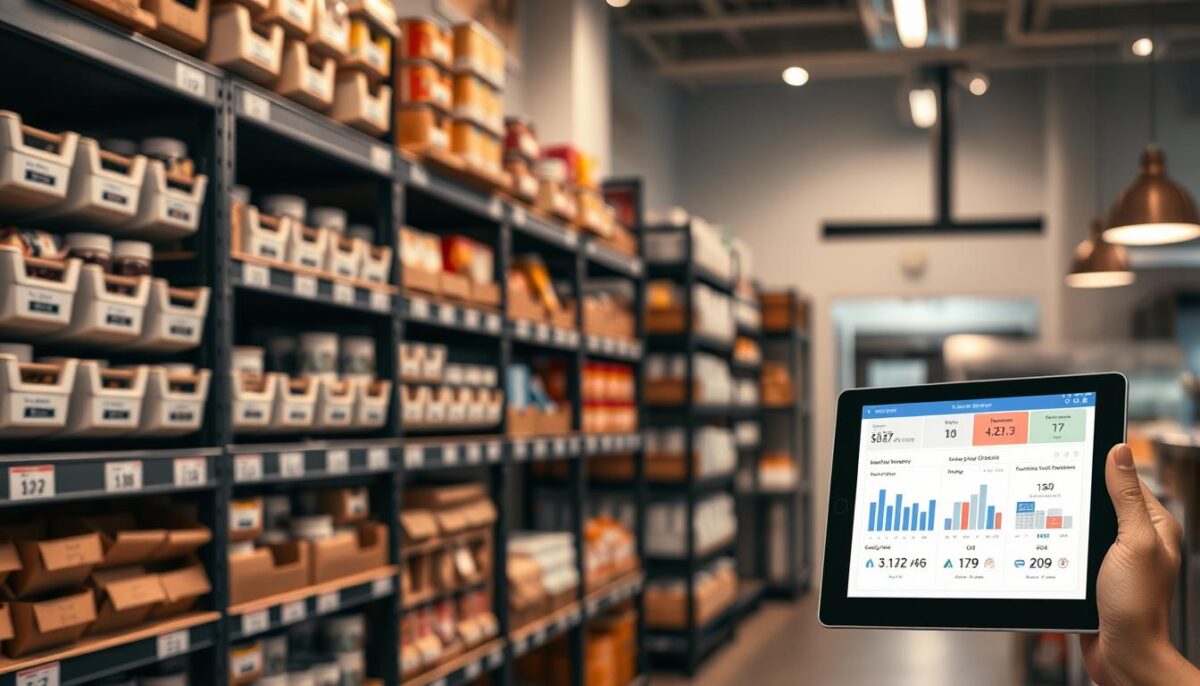
When it comes to managing inventory across multiple locations, Toast and Clover offer centralized purchasing and inventory transfers, making them more suitable for larger restaurant chains. All three systems provide features like automatic depletion based on sales and low-stock alerts, helping restaurants maintain optimal inventory levels.
The choice of POS system ultimately depends on the specific inventory management needs of the restaurant. For full-service restaurants with complex inventory needs, Toast or Clover might be more appropriate due to their advanced features.
Online Ordering, Takeout, and Delivery Integration
As restaurants expand their services beyond traditional dine-in, integrating online ordering, takeout, and delivery into their POS system becomes crucial. In this section, I’ll compare how Toast, Square, and Clover POS systems handle online ordering, takeout, and delivery, highlighting their capabilities and fees associated with these services.
Square stands out as an omnichannel payments provider, offering a free online ordering solution through its Square Online website builder. This allows businesses to create their own ordering platform without additional monthly fees. In contrast, Toast and Clover charge extra for their online ordering platforms, either as a monthly subscription or a percentage of each online order.
All three systems can integrate with third-party delivery services like DoorDash, Uber Eats, and Grubhub, streamlining order-to-kitchen workflows. However, the way they manage delivery logistics and takeout-specific functions varies. For instance, Square’s free online ordering solution includes features like order status notifications and pickup instructions, enhancing the customer experience.
When choosing a POS system, restaurants must consider the cost-effectiveness and efficiency of online ordering and delivery integration. By evaluating these factors, businesses can select a system that supports their growth and meets their customers’ evolving needs.
Third-Party Integrations and Expandability
A POS system’s integration capabilities can make or break its effectiveness in a restaurant setting, influencing everything from customer satisfaction to inventory management. When evaluating Toast, Square, and Clover, it’s essential to consider their third-party integration ecosystems.
Clover offers an impressive app market with over 300 software integrations, including payroll, staff management, accounting, inventory control, customer loyalty programs, and e-commerce platforms. Toast focuses on restaurant-specific integrations, partnering with platforms like Uber Eats, Grubhub, and DoorDash, as well as loyalty programs, inventory management, and employee scheduling. Square boasts a robust app store with a wide selection of third-party POS integrations.
The breadth and depth of available integrations vary significantly across the three systems. While Clover offers the most extensive app market, Toast’s integrations are highly tailored to restaurant operations. Square’s app store, on the other hand, provides a broad range of integrations that cater to various business needs.
| POS System | Number of Integrations | Notable Integrations |
|---|---|---|
| Clover | 300+ | Payroll, Accounting, E-commerce |
| Toast | Varied | Uber Eats, Grubhub, Loyalty Programs |
| Square | Robust | Inventory Management, Employee Scheduling |
When choosing a POS system, consider how well each system’s integration capabilities align with your restaurant’s specific needs and growth plans. By selecting a system with the right integrations, you can create a customized technology stack that enhances operational efficiency and drives business success.
Best POS System for Different Restaurant Types
Restaurants come in various forms, from small cafes to food trucks, and selecting a POS system that fits their specific needs is essential. The right POS system can streamline operations, improve customer service, and increase revenue.
Small Cafes and Quick-Service Restaurants
For small cafes and quick-service restaurants, a POS system that is easy to use and manage is crucial. Square POS is often a good choice due to its user-friendly interface and robust features. It allows for efficient order management and can handle a variety of payment types. Additionally, its compact card readers are affordable and convenient.
Full-Service Restaurants and Bars
Full-service restaurants and bars require a POS system that can handle complex orders and table management. Toast POS is typically well-suited for these establishments due to its advanced features, such as kitchen display systems and order routing. It also offers comprehensive reporting and analytics to help manage inventory and labor costs.
Food Trucks and Pop-Up Locations
For food trucks and pop-up locations, portability and flexibility are key. Square POS stands out for its compact card readers and offline capabilities, allowing businesses to process payments even without a stable internet connection. Its simple menu structures and quick checkout options also make it ideal for mobile food businesses.
| Restaurant Type | Recommended POS | Key Features |
|---|---|---|
| Small Cafes/Quick-Service | Square POS | User-friendly, robust order management |
| Full-Service Restaurants/Bars | Toast POS | Advanced kitchen display, order routing |
| Food Trucks/Pop-Up Locations | Square POS | Portable, offline payment processing |
As highlighted by industry experts, “The right POS system can make a significant difference in a restaurant’s efficiency and customer satisfaction levels.” By choosing a POS that aligns with their business model, restaurants can improve their overall service and increase customer loyalty.
Conclusion: Making the Right POS Choice for Your Restaurant
A well-chosen POS system can be a game-changer for restaurants, improving efficiency and profitability. As a restaurant owner, selecting the right POS system is crucial to meeting your specific business needs.
When deciding between Toast, Square, and Clover POS systems, consider factors like restaurant type, size, budget, growth plans, and specific operational requirements. Toast offers restaurant-specific depth, but at a higher cost. Square provides affordability and simplicity, but with more limited features. Clover boasts an intuitive interface and lower processing fees, but with higher upfront costs.
To make an informed decision, prioritize your needs: affordability, specific features, hardware durability, or payment processing rates. Consider implementation factors like setup time, staff training, and potential disruption to existing operations. It’s also essential to think about long-term costs and scalability, not just the initial price point.
By weighing these factors and understanding the strengths and weaknesses of each POS system, you can choose the best solution for your unique business. Whether you opt for Toast, Square, or Clover, the right POS system will help you streamline operations, enhance customer experience, and drive business growth.
FAQ
What are the key differences between Toast, Square, and Clover POS systems?
The main differences lie in their hardware options, pricing structures, and restaurant-specific features. For instance, Toast is known for its integrated kitchen display system, while Square offers a more flexible payment processing system.
How do I choose the best POS system for my restaurant?
To make the right choice, consider your restaurant’s specific needs, such as inventory management, online ordering integration, and employee management. I recommend comparing the features and pricing of different POS systems, including Toast, Square, and Clover.
What are the typical payment processing fees associated with POS systems?
Payment processing fees vary depending on the POS system and the type of card used. Generally, you can expect to pay between 2.5% +
FAQ
What are the key differences between Toast, Square, and Clover POS systems?
The main differences lie in their hardware options, pricing structures, and restaurant-specific features. For instance, Toast is known for its integrated kitchen display system, while Square offers a more flexible payment processing system.
How do I choose the best POS system for my restaurant?
To make the right choice, consider your restaurant’s specific needs, such as inventory management, online ordering integration, and employee management. I recommend comparing the features and pricing of different POS systems, including Toast, Square, and Clover.
What are the typical payment processing fees associated with POS systems?
Payment processing fees vary depending on the POS system and the type of card used. Generally, you can expect to pay between 2.5% + $0.10 per transaction for online payments. It’s essential to review the pricing plans of your chosen POS system to understand the fees involved.
Can I integrate my POS system with other restaurant tools and services?
Yes, many POS systems, including Toast, Square, and Clover, offer third-party integrations with various restaurant tools and services, such as online ordering platforms, delivery services, and marketing software. This can help streamline your operations and improve customer experience.
How do POS systems manage inventory and menu engineering?
Modern POS systems, like Toast and Clover, offer inventory management features that allow you to track stock levels, monitor sales, and optimize your menu. Some systems also provide menu engineering tools to help you analyze profitability and make data-driven decisions.
What kind of customer support can I expect from a POS system provider?
Reputable POS system providers, such as Square and Toast, typically offer 24/7 customer support through various channels, including phone, email, and online chat. This ensures that you can get help whenever you need it, minimizing downtime and ensuring a smooth operation.
.10 per transaction for online payments. It’s essential to review the pricing plans of your chosen POS system to understand the fees involved.
Can I integrate my POS system with other restaurant tools and services?
Yes, many POS systems, including Toast, Square, and Clover, offer third-party integrations with various restaurant tools and services, such as online ordering platforms, delivery services, and marketing software. This can help streamline your operations and improve customer experience.
How do POS systems manage inventory and menu engineering?
Modern POS systems, like Toast and Clover, offer inventory management features that allow you to track stock levels, monitor sales, and optimize your menu. Some systems also provide menu engineering tools to help you analyze profitability and make data-driven decisions.
What kind of customer support can I expect from a POS system provider?
Reputable POS system providers, such as Square and Toast, typically offer 24/7 customer support through various channels, including phone, email, and online chat. This ensures that you can get help whenever you need it, minimizing downtime and ensuring a smooth operation.
